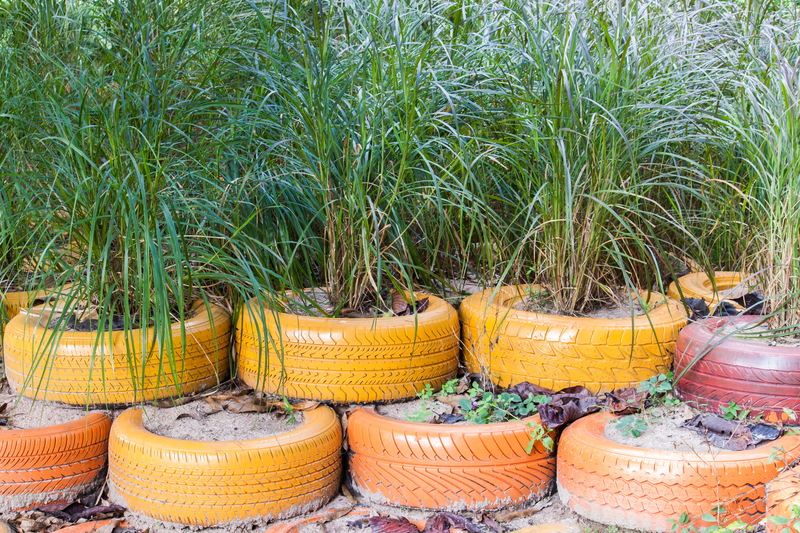Eco-Savvy Office: Mastering the Art of Waste Reduction
In a fast-evolving business world, companies are striving to balance profitability with environmental consciousness. As workplaces rethink their impact on the planet, being an eco-savvy office is no longer a choice; it's a commitment. Mastering the art of waste reduction not only benefits the earth but also fosters productivity and brand reputation. This comprehensive guide explores actionable steps, expert insights, and the transformative power of a sustainable workspace.
Why Is Waste Reduction Essential for Offices?
Every office, whether a bustling corporate headquarters or a cozy home-based startup, generates waste. According to the Environmental Protection Agency (EPA), commercial waste accounts for a significant portion of landfill deposits each year. Implementing waste reduction strategies is critical for:
- Minimizing Environmental Footprint: Reducing landfill contributions and resource use.
- Cutting Operational Costs: Less waste means lower disposal fees and resource consumption.
- Enhancing Corporate Image: Modern clients and employees favor eco-responsible businesses.
- Boosting Employee Morale: Team members feel empowered working for a purpose-driven company.

The Eco-Savvy Office: What Defines Eco-Conscious Workplaces?
Being an eco-savvy office means adopting sustainable workplace practices that minimize waste, conserve resources, and prioritize the environment in daily operations. Forward-thinking offices cultivate a culture where waste reduction permeates every aspect of business, from purchasing to production and beyond.
Key Attributes of Eco-Conscious Offices
- Resource Efficiency: Smart use of all materials and utilities.
- Proactive Waste Segregation: Recycling, composting, and safe disposal programs.
- Employee Education: Regular eco-training and participation initiatives.
- Continuous Improvement: Regular audits and updates to sustainability policies.
Comprehensive Strategies for Effective Office Waste Reduction
1. Conduct a Waste Audit
Before improving, you need to measure. Conducting a waste audit is the first step in your office's sustainability journey. Assess what materials are most commonly discarded -- from paper and plastic to electronics and food waste -- and identify key areas to target for improvement.
2. Transition to a Paperless Office
Paper remains a top contributor to office waste. Embracing digital workflows for reports, memos, and records, not only slashes waste but also boosts efficiency.
- Utilize cloud storage for document management and collaboration.
- Adopt e-signatures to eliminate printed agreements.
- Only print when necessary and use duplex (double-sided) options.
- Repurpose used paper as note pads and internal documentation.
3. Optimize Office Supply Purchasing
Select products with recyclable packaging, opt for refillable ink cartridges, and prioritize energy-efficient devices. Bulk purchasing reduces packaging waste, while quality supplies minimize frequent replacements.
- Choose reusable over disposable: Ditch single-use coffee cups, utensils, and plates.
- Encourage personal mugs and water bottles among staff.
- Purchase green-certified office supplies for everyday use.
4. Implement Smart Recycling and Composting
An efficient recycling system is the cornerstone of an eco-conscious workplace. Make composting easy for kitchen waste, coffee grounds, and food scraps.
- Clearly label bins for recyclables, compost, and landfill materials.
- Offer recycling stations for e-waste and batteries.
- Partner with local recyclers for unique office materials like electronics or old furnishings.
5. Foster Digital Communication
Replace paper memos and newsletters with digital alternatives. Instant messaging platforms, emails, and digital notice boards keep employees informed while dramatically reducing paper waste.
6. Host "Green Days" and Waste Reduction Drives
Motivate your workforce with themed office events, such as "Zero Waste Days," where employees are encouraged to minimize waste and offer creative sustainability solutions.
- Host recycling challenges with rewards.
- Invite sustainability experts for workshops and inspiration.
- Donate old electronics and supplies to local nonprofits.
7. Upgrade to Modern, Eco-Friendly Appliances
Invest in energy-efficient appliances and lighting. Devices with Energy Star ratings not only use less energy but often have longer lifespans -- reducing both running costs and appliance turnover.
8. Engage Employees in Sustainability
Employee participation is vital for success. Form a "Green Team" to oversee eco-initiatives, gather feedback, and recommend improvements. Recognition and rewards for participation can further reinforce a sustainable mindset.
Office Design for an Eco-Savvy Space
Furnishing for Sustainability
When upgrading furniture, opt for items made from recycled materials, or source second-hand when possible. Modular and multi-use furniture minimizes waste accumulation over time.
- Consider donating old furnishings instead of discarding them.
- Work with suppliers who have take-back programs for end-of-life products.
Going Green with Office Layout
Maximize natural light and airflow to decrease reliance on artificial lighting, air conditioning, and heating systems. Indoor plants improve air quality while boosting morale.
Tech Upgrades for Minimal Waste
Prioritize devices that are easily repairable, upgradable, and recyclable. Encourage software updates to extend hardware longevity and organize electronic recycling drives for obsolete devices.
Waste Reduction Success Stories: Inspiration from Leading Offices
- Google: By integrating comprehensive recycling, composting, and reusable supplies, Google headquarters in California diverted over 90% of its waste from landfills, earning a global "zero waste to landfill" certification.
- Unilever: Consolidated supply chains, invested in staff education, and eliminated single-use plastics, resulting in dramatic reductions in waste and operational expenses.
- Local Startups: Small businesses with limited budgets implemented shared resource schemes and thrift-based supply purchasing, proving that every step counts--regardless of company size.
The Hidden Advantages of a Zero Waste Office
Committing to a waste-efficient workplace brings a cascade of benefits:
- Financial Gains: Lower supply and disposal costs.
- Enhanced Productivity: A clutter-free, organized environment fosters focus.
- Talent Attraction and Retention: Eco-conscious values appeal to today's workforce.
- Regulatory Compliance: Meet or exceed green building and workplace standards.
Common Roadblocks and How to Overcome Them
Resistance to Change
Old habits die hard. To encourage buy-in:
- Involve employees in goal setting and solution generation.
- Communicate the benefits clearly -- both ecological and organizational.
- Start with small wins to build momentum.
Lack of Infrastructure
If recycling services or composting options are scant, partner with local providers or work with building management to enhance shared amenities.
Costs of Transition
While sustainable solutions sometimes require initial investment, focus on long-term savings and resource efficiency. Seek grants, rebates, or government incentives aimed at supporting business sustainability.
Building a Culture of Ongoing Waste Reduction
Long-term success in crafting an eco-savvy office relies on ongoing commitment. Maintain momentum with regular progress reviews, transparent communication, and celebration of milestones. Solicit staff feedback and be prepared to adapt strategies as technology and best practices evolve.
Top Tools and Resources for Sustainable Offices
- Green Building Certification: LEED, BREEAM, and WELL for design and operations standards.
- Waste Tracking Apps: Platforms like Re-TRAC and Microsoft Sustainability Manager simplify analysis and reporting.
- Online Communities: Join eco-office networks to share tips, resources, and solutions.
- Sustainable Procurement Guides: EPA and Green Seal provide vetted, eco-friendly supply lists.

The Future of Waste Reduction in the Workspace
As environmental regulations tighten and collective awareness grows, eco-savvy offices will lead the charge toward a lower-waste, more resourceful future. Integrated smart technologies, circular supply chains, and employee-driven innovation will be at the forefront of this evolution.
Companies that master the art of waste reduction will not only thrive financially but will also be recognized as responsible stewards of our planet.
Action Checklist: How to Build Your Own Eco-Savvy Office
- Audit your current waste practices and set clear targets.
- Reduce paper use through digital alternatives and smart printing.
- Choose sustainable supplies and appliances.
- Implement robust recycling and composting systems.
- Engage and educate your team about eco-friendly habits.
- Regularly monitor results and celebrate improvements.
Your Eco-Savvy Journey Starts Now
Adopting even a handful of these strategies can make a profound difference. Whether you're transforming a large corporate office or making your home workspace greener, mastering the art of waste reduction is within reach. The benefits--from cost savings and a healthier workspace to an enhanced brand reputation--are too significant to ignore.
Start your journey today: evaluate your waste footprint, involve your colleagues, and watch your eco-savvy office flourish as a shining example of sustainable business in action!